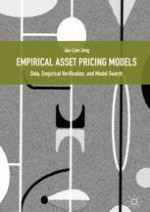2018 | OriginalPaper | Buchkapitel
4. Finding Essential Variables in Empirical Asset Pricing Models
verfasst von : Jau-Lian Jeng
Erschienen in: Empirical Asset Pricing Models
Aktivieren Sie unsere intelligente Suche, um passende Fachinhalte oder Patente zu finden.
Wählen Sie Textabschnitte aus um mit Künstlicher Intelligenz passenden Patente zu finden. powered by
Markieren Sie Textabschnitte, um KI-gestützt weitere passende Inhalte zu finden. powered by
